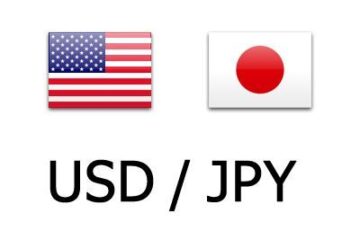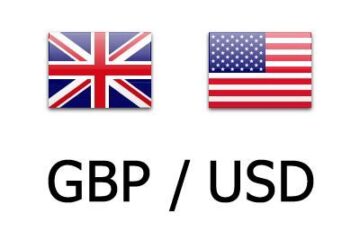Check back for updates throughout the trading day
U.S. equity futures plunged lower Monday, while safe-haven Treasury bonds rallied and oil prices slumped to multi-month lows, amid a global market rout tied to recession fears, overbought tech stocks and rising geopolitical risks.
Updated at 6:50 AM EDT
Fear Spike
The CBOE Group’s VIX index, Wall Street’s go-to volatility gauge, is moving sharply higher in early Chicago trading, rising nearly 170% and topping the $50 mark for the first time in four years.
That suggests traders are expecting daily swings of around 3.12% for the S&P 500 each day for the next month,
$VIX This is wild. This is 10 year chart of volatility. A move to 50 was not on my bingo card. See that in comparison to covid spike. pic.twitter.com/3Bhn5WNyOd
— JaguarAnalytics (@JaguarAnalytics) August 5, 2024
Stock Market Today
Stocks in Japan were wiped out last night, with the Nikkei 225 falling 12.4% and suffering its biggest single-day decline since the Black Monday collapse of 1987 as investors dumped risky trades and fled to safe-have assets.
JUST IN 🚨: Japanese Stocks suffer largest decline since Black Monday 1987 pic.twitter.com/XbURmJOxhI
— Barchart (@Barchart) August 5, 2024
Benchmark 10-year Treasury note yields hit a mid-2023 high of 3.723% in overnight trading, and were last marked 5 basis points lower from their Friday close at 3.741% heading into the New York session.
Wall Street’s fear gauge, meanwhile, surged more than 125% in after-hours trading to the highest level since the depths of the pandemic, with the CBOE Group’s VIX index last marked at $41.89.
That levels suggests traders expect the S&P 500 to endure daily moves of around 115 points each day for the next thirty days, more than triple the volatility price into markets in early July.
U.S stocks are facing one of their biggest single-day declines since the pandemic Monday amid a global market meltdown triggered by recession fears.
Michael M. Santiago/Getty Images
“It feels like the perfect storm triggered by the Fed rate decision last week followed by a US jobs report that recalibrated the market’s assessment of a recession,” Saxo Bank strategists wrote. “This was the trigger. The rest is mechanical trading decisions based on risk.”
“The turmoil will give the long-term investor some excellent opportunities which we will write about this week,” they added.
Concerns that a U.S. recession, tied to a Fed policy error that left rates too high for too long, is also hammering global oil prices, with Brent crude contracts falling to the lowest levels since late Spring.
Related: Jobs report triggers key recession warning signal as stocks plunge
WTI futures for September delivery, the U.S. pricing benchmark that it tightly-linked to domestic gasoline prices, were marked $1.31 lower at $72.21 per barrel.
The Fed left its benchmark lending rate unchanged at between 5.25% and 5.5% last week, and wouldn’t commit to a September rate cut, just days before a weaker-than-expected reading for July manufacturing activity and softer jobs market data that included the highest unemployment rate in four years.
The longest yield curve inversion in history (758 days) is close to ending today w/ the 10-year Treasury yield now only 0.08% lower than the 2-Year Treasury yield. Historically, the flip back to a positive sloping curve after a long inversion has occurred near a recession. pic.twitter.com/pfqJzAuu0h
— Charlie Bilello (@charliebilello) August 4, 2024
Markets were also on edge amid the rising military tensions in the Middle East, where U.S. officials are urging Americans to leave Lebanon and Israel is bracing for a possible retaliatory attack from Iran and Hezbollah following the killing of a senior Hamas leader last week in Tehran.
On Wall Street, tech stocks look set to take the brunt of the expected selloff, with futures contracts tied to the Nasdaq suggesting a 770 point plunge at the start of trading.
Futures tied to the S&P 500, meanwhile, are priced for a 140 point decline while the Dow Jones Industrial Average is called 690 points lower to kick off the week.
Related: After the Fed tipped markets over, now what?
Apple (AAPL) shares were a notable premarket decliner, falling 8.44% to $201.30 following news over the weekend that billionaire investor Warren Buffett had dumped nearly half his stake in the tech giant last quarter.
More Wall Street Analysts:
Analyst revisits Nvidia stock price target after Blackwell checksAnalysts prescribe new Walgreens stock price targets after earningsAnalyst revises Facebook parent stock price target in AI arms race
In Europe, the region-wide Stoxx 600 was marked 2.6% lower in Frankfurt, while Britain’s FTSE 100 slumped 2.2% in London.
Overnight in Asia, Japan’s Nikkei 225 lead a regional slump that pulled the MSCI ex-Japan benchmark 4.11% lower into the close of trading with stocks in Tokyo tumbling into bear market territory following Monday’s meltdown.
Related: Veteran fund manager sees world of pain coming for stocks


